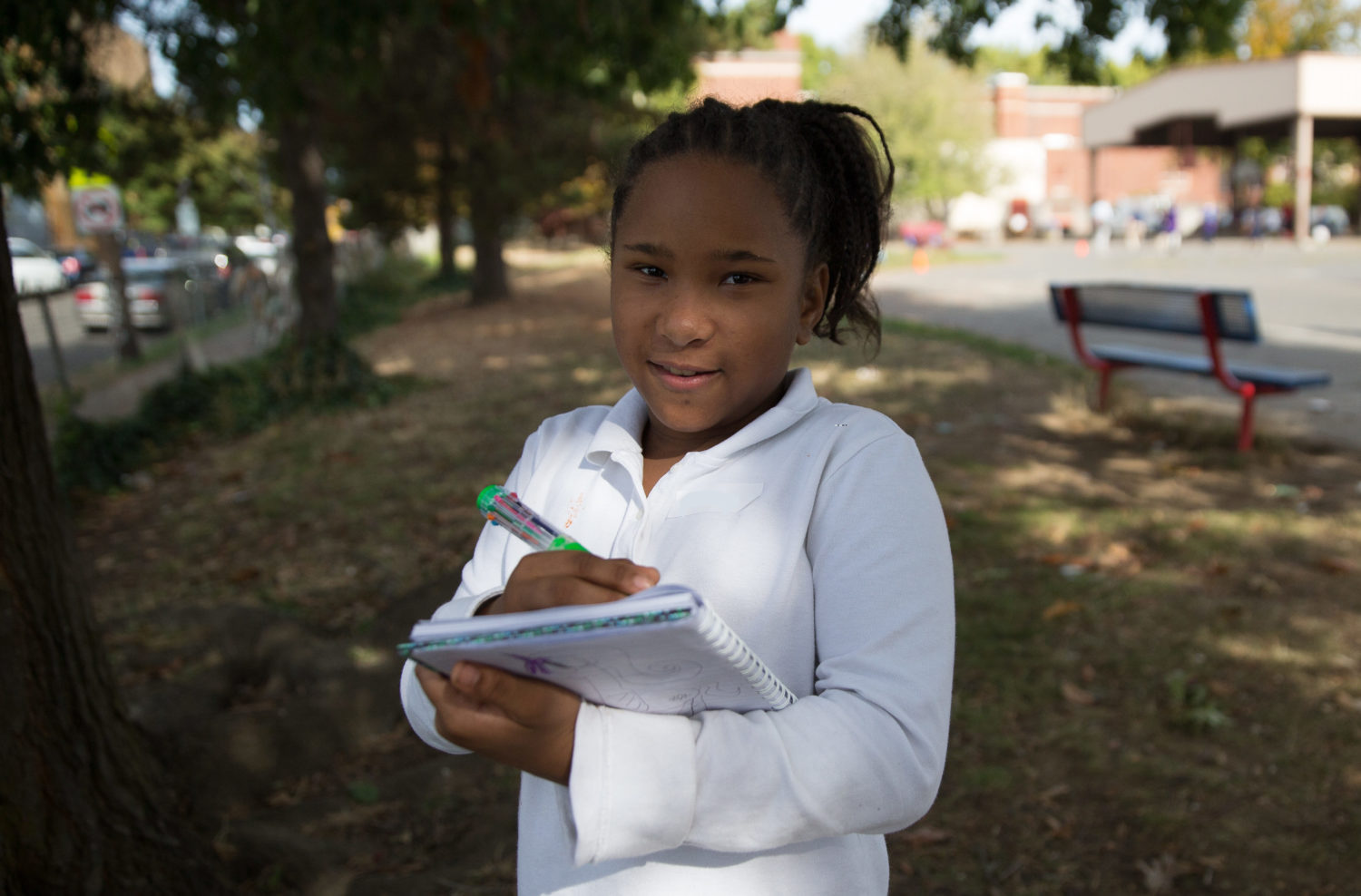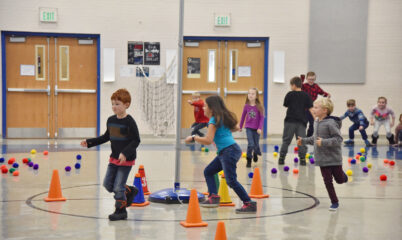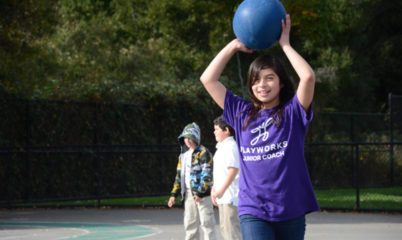How might we help all kids play more at recess?
Small changes have a big impact. At Playworks, we look at everything from the lines on the blacktop to how students play tag. Then, we re-design spaces and experiences to maximize the recess experience so all kids can enjoy it more.
Take a peek at our design notebook for ideas to try at your school:
Recycle Lines
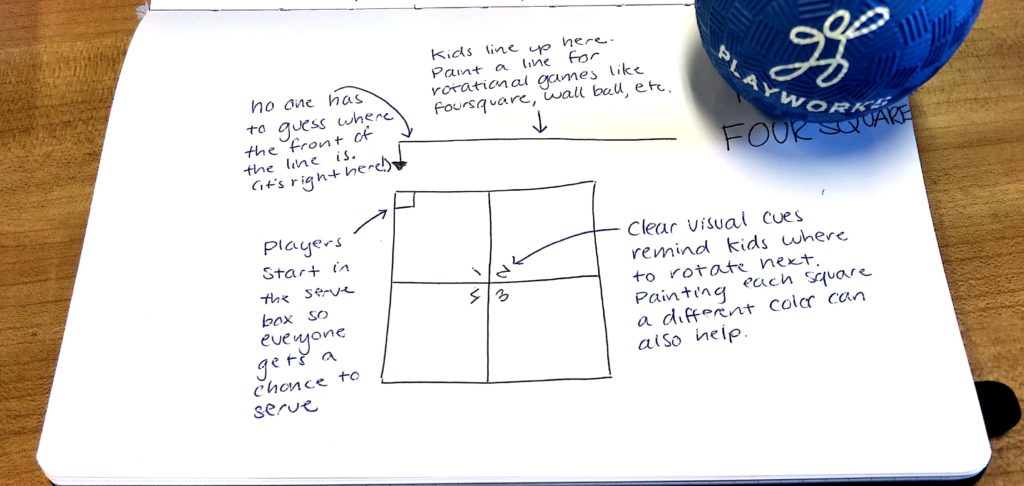
Design challenge: Playing with peers is crucial for learning, but many students have a hard time joining in. Students who struggle with entry behaviors often miss out on opportunities for development.
Design solution: Clear entry points let students practice joining games in ways that are not disruptive. When games are easy to understand, it is also easier for students to practice welcoming new players. Above, we’ve redesigned a typical foursquare court to include visual cues that make the game more accessible.
- Paint or chalk a “Recycle Line” next to games where students rotate in and out. Make it obvious where the front of the line is so there is no confusion.
- At the beginning of the year, do a recess walk through to let students know that anyone can wait in line to join these games at any time.
- In games like foursquare or kickball, students need to know which way to rotate. Number or color squares and bases so kids who have a hard time with directions don’t need to keep asking.
- In foursquare, put the server box in the first square so everyone gets to practice serving the ball, not just the players who make it to the last square.
Tag! You Are All “It”
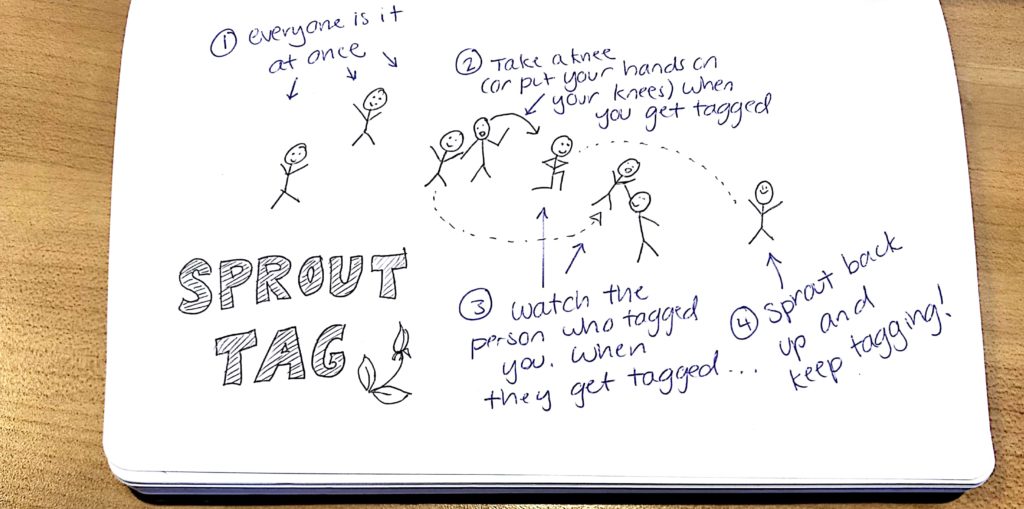
Design challenge: Kids love to run, so it’s no surprise that kids love tag. But think about the design flaws in a traditional tag game. Often, the player who is “it” can’t catch up to anyone. Not only can this be embarrassing, it also means that no one else gets to take a turn tagging. Often, the energy starts to lag and the game breaks up.
Design solution: Try variations on tag where everyone is “it” at the same time. Here are a few of our favorites:
Recess Systems

Design Challenge: If your school posted signs for “days since last injury” and “days since last conflict landed in the principal’s office” what would they say? Scrapped knees and hurt feelings are normal, important parts of childhood. But when recess feels unsafe or when balls wind up over the fence, all kids end up included in the consequences.
Design Solution: When students use equipment as intended, kids get to keep playing longer. These strategies create more opportunities to include others in the fun:
- Assign equipment to game areas rather than having students “check out” items. When the foursquare ball stays with the foursquare court, balls are less likely to go flying. Plus, kids get to keep playing and inviting others in even when the person who started the game leaves.
- Introduce games at the beginning of the year and post instructions next to play spaces as a reminder. Clear rules ensure that all kids know how equipment should be used.
- Share easy-to-play variations on challenging sports to create more opportunities to include beginners. Try posting rules for three lines basketball next to the basketball hoop or three lines soccer next to the soccer field.
What is your recess design challenge?
Thousands of schools around the country have partnered with Playworks to re-design recess. Get in touch to learn how we can help your school.
